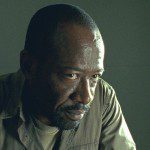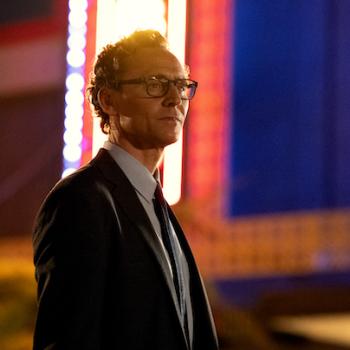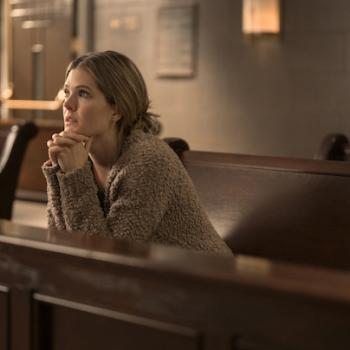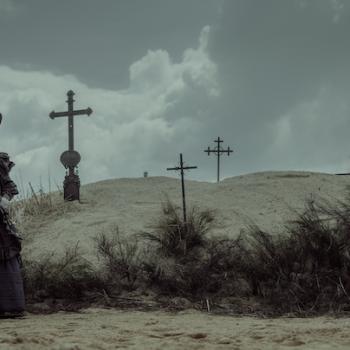Science and religion are sometimes portrayed as mortal enemies—worldviews that are completely incompatible with one another. This portrayal has always driven me a little crazy. I believe it’s perfectly rational to believe in God and still honor science: You need not always pit Billy Graham and Stephen Hawking in some eternal cage match.
I’m not alone in this. Granted, when the Pew Research Center recently asked Americans whether science and religion are often in conflict, nearly six in 10 said they were. But when Pew asked whether religion conflicted with their own religious beliefs, only 30 percent said it did. Moreover, the more religious you were, the less likely you were to see a conflict between science and religion: Three out of every four Americans who seldom or never attend religious services say that science and faith butt heads. But just half of those who go to church at least every week say the same thing.
“The people who are farther away from religion themselves tend to see stronger conflict, because they’re not as close to actual religious people,” Robert P. Jones, CEO of the Public Religion Research Institute told Slate. “They aren’t seeing all those people who don’t have a conflict.”
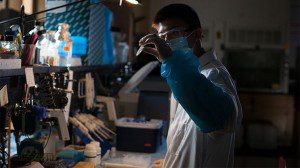
I was thinking about the relationship between religion and science while watching the National Geographic Channel’s new six-part series, Breakthrough. The series chronicles some breathtaking scientific advances in a variety of areas, from exploring new avenues for energy to slowing down the aging process. The first episode “Fighting Pandemics,” airing today (Nov. 1), gives viewers a compelling, terrifying and ultimately encouraging look at how scientists dealt with last year’s Ebola outbreak in West Africa.
The show unpacks why Ebola found such a fertile place to spread in Guinea and Sierra Leon: The lack of medical infrastructure, the structure of the communities, the super-infectious nature of the disease itself. And it suggests that both religion and science—at least how they manifested on the ground level—may have unintentionally helped the disease spread. On the religious side, A faith healer in Sierra Leon told the sick in Guinea that she could cure them of the horrific disease: When she instead succumbed to Ebola herself, the virus spread to those who attended her funeral. When it was clear that the disease was reaching epidemic-like levels, Western scientists in hazmat suits swept in to try to contain the outbreak. But according to Dr. Lynn Black, of Last Mile Health in Liberia, it’s not easy to trust someone under such conditions.
“You had mothers with sick children, and you’d have somebody come in a white Land Rover in these spacesuits, not speaking their language, asking them to turn over that child, to be taken miles away to a place where all they’ve heard is that people go there and die,” Black said. “I would not hand over my child to someone like that. You would have to cut off my arms before I would hand my child over to a stranger who was going to take them somewhere that I was told they would die.”
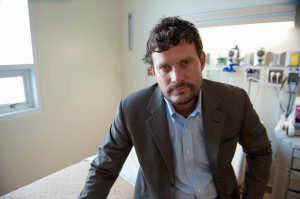
“Fighting Pandemics” highlights the amazing work doctors and scientists did to eventually rein in the epidemic, and the science behind it all is truly miraculous. But the episode eventually narrows much of its focus down to Ian Crozier, a Rhodesian-born American doctor who went to Sierra Leon with the World Health Organization. He contracted the disease and was flown back to the United States, where he battled for his life for 40 days.
It’s through his story that we learn the real secret to battling Ebola: Keep the patient alive long enough to give the body time to fight the disease itself. In the end, science simply helped Crozier’s body to do what it was designed to do.
There’s a metaphor in there somewhere, I think.
Medical science is, without question, pretty wonderful. I’m sure I would’ve died about a half-dozen times by now without it. But a lot of this science is predicated on, simply, understanding our miraculous selves a little bit better. Medicine works alongside our biology and immune systems. Rarely does it supersede them. And the same, I think, can be said for science and faith itself.
Ultimately, religion and science have some of the same end goals in mind: They’re tools to better help us understand our worlds and ourselves a little better, to get a better sense of our place and our purpose. These tools don’t negate each other. They complement each other, allowing us to ask the same questions in different ways. I can see no reason why they’d be mutually exclusive—why a scientist couldn’t pray, why a pastor couldn’t marvel at the microcosms under a microscope. Indeed, some of history’s greatest scientists have been men of faith. Some of history’s greatest theologians have had a deeply scientific bent.
We know that many of the doctors and health care workers who went to West Africa to fight Ebola, including Dr. Kent Brantly, were Christian. “Fighting Pandemics” makes no mention of Crozier’s faith, but it’s interesting that, according to The New York Times, Crozier’s mother spent most nights in the hospital with him—humming hymns to him as he fought for his life.
I’m sure that Crozier’s mother was grateful in those days for the medical care her son was being given. But she wasn’t, it would seem, putting her faith in that alone.



